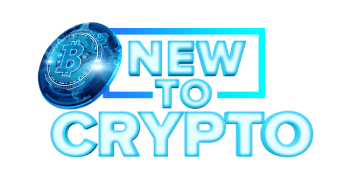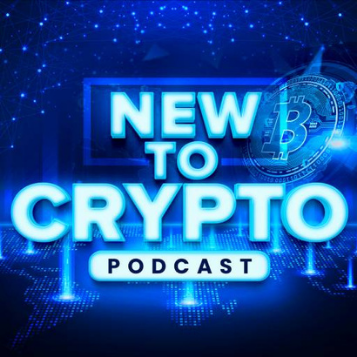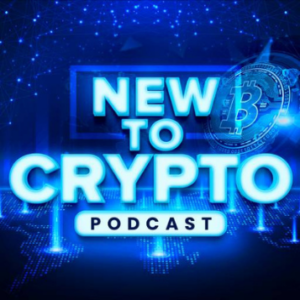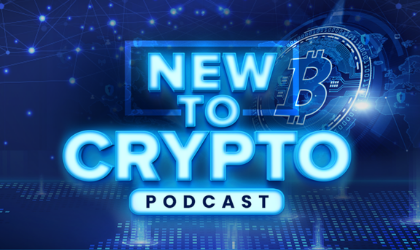Unknown Speaker 0:01
Welcome to the New To Crypto podcast designed to guide you through the crypto landscape with pinpoint accuracy created for the new and intermediate crypto investor. Join your host Crypto Travels Michael as he takes you through the different facets of getting started and succeeding in your crypto journey. New to crypto podcast brings you new episodes daily Monday through Friday with surprise bonus episodes sometimes on the weekend. Let me ask you, are you new to crypto don’t know where to start? Are you more experienced but have questions? Then you’re in the right place. This podcast is designed for you, coming at you from the training center in the lifestyle design studio. Here’s your host Crypto Travels Michael.
Michael 0:52
Welcome to today’s show. People from over 70 countries and 500 cities around the world have listened to this podcast. And the show is just over two months old. So if you’re here and you’ve been here since the beginning, or if you’re just listening for the first time, I truly welcome you. I welcome you to the podcast. And without further ado, let’s jump into today’s episode. It’s all about Cosmos. So what is Cosmos and their ecosystem? Cosmos is an ever expanding ecosystem of interconnected apps and services built for a decentralized future. Cosmos is a decentralized network of independent parallel blockchains. Each is powered by a BFT consensus algorithm, like Tendermint consensus. In other words, Cosmos is an ecosystem of blockchains that can scale and interoperate with each other. Before Cosmos blockchains were siloed and unable to communicate with each other. They were hard to build and could only handle a small amount of transactions per second. Cosmos solves these problems with a new technical vision. In order to understand the vision, we need to go back to the fundamentals of blockchain technology.
I like how the crypto exchange Kraken words the following: The vision of Cosmos Blockchain 3.0. The vision of Cosmos is to make it easier for developers to build block chains and break the barriers between blockchains by allowing them to transact with each other. The end goal is to create an Internet of blockchains, a network of blockchains able to communicate with each other in a decentralized way. With Cosmos blockchains can maintain sovereignty, process transactions quickly and communicate with other blockchains in the ecosystem. This vision is achieved through a set of open source tools, like what they call Tendermint, and the Cosmos SDK, and IBC designed to let people build custom, secure, scalable and interoperable blockchain applications quickly. Let’s take a closer look at some of the most important tools in the ecosystem, as well as the technical architecture of the Cosmos network.
Cosmos is an open source community project initially built by the tendermint team, everyone is welcome to build additional tools to enrich the greater developer ecosystem. Tendermint BFT is a solution that packages the networking and consensus layers of a blockchain into a generic engine, allowing developers to focus on application development, as opposed to the complex underlying protocol. As a result, Tendermint saves hundreds of hours of development time. T endermint also designates the name of the Byzantine fault tolerant, also known as BFT consensus algorithm used within the tender mint BFT engine. The tender mint BFT engine is connected to the application by a socket protocol called the application blockchain interface. This protocol can be wrapped into any programming language, making it possible for developers to choose a language that fits their needs. So it is public or private blockchain ready it offers high performance, it offers instant finality, and it provides excellent security.
Cosmos is called the Internet of blockchains. By its founding team, Cosmos aims to create a network of crypto networks united by open source tools for streamlining transactions between them. It’s this focus on customizability and interrupt ability that sets Cosmos apart from other projects, rather than prioritizing its own network. Its goal is to foster an ecosystem of networks that can share data and tokens programmatically, with no central party facilitating the activity. Each new independent blockchain created within Cosmos is called a zone, it’s then tethered to the Cosmos hub, which maintains a record of the state of each zone and vice versa. The Cosmos hub, a proof of stake blockchain is powered by its native ATOM cryptocurrency. So how does Cosmos work? The Cosmos network consists of three layers application layer, it processes transactions and updates the state of the network. The networking layer allows communication between transactions in blockchains. And the consensus, which helps nodes agree to the current state of the system. So in order to tie all of three of the layers together and allow developers to build blockchain applications, Cosmos relies on a set of open source tools. Tendermint is one of those tools, Tendermint, Byzantine fault tolerance, I’m going to share the links of of these detailed parts so you can read and see visually, as opposed to just hearing the audible portion from me.
So let’s break down and unpack who created Cosmos. Well, the inter chain Foundation did. It’s known as ICF and it’s a Swiss nonprofit that funds open source blockchain projects. It’s this organization that helped develop and launch Cosmos. Developers Jay Quan and Ethan Buckman co founded the Cosmos network in 2014, at the time creating Tendermint The consensus algorithm that would go on to power Cosmos. So those two later authored the Cosmos whitepaper, and released its software in 2019. The inter chain foundation held a two week initial coin offering known as an ICO for the ATOM token in 2017. And at that time, they raised over $17 million. Tendermint Inc. also raised $9 million to continue development of the project through series a funding round in 2019. Currently, the native token ATOM, the market cap for that token is just over $5.6 billion. There are just over 220 million tokens currently in circulating supply, and the ATOM token is currently trading at just over $25 per token. According to their site, Cosmos.network there are 249 apps and services currently built on Cosmos. I believe their ecosystem will continue to grow. They’re doing great things in the industry and I hope you liked today’s episode. If you did, be sure to like and subscribe to the show. And stay tuned here tomorrow for another special episode. Until then, make it a great day.
Unknown Speaker 9:04
Thanks for tuning in to New To Crypto podcast. If you liked the episode, be sure to follow and subscribe. You can listen to every episode on all major platforms. Have an interest in being on the show or want advertising reach out at newtocrypto.io. Head over to our site newtocrypto.io to access the resources mentioned in each episode. Until next time, remember to navigate the crypto landscape with pinpoint accuracy.














